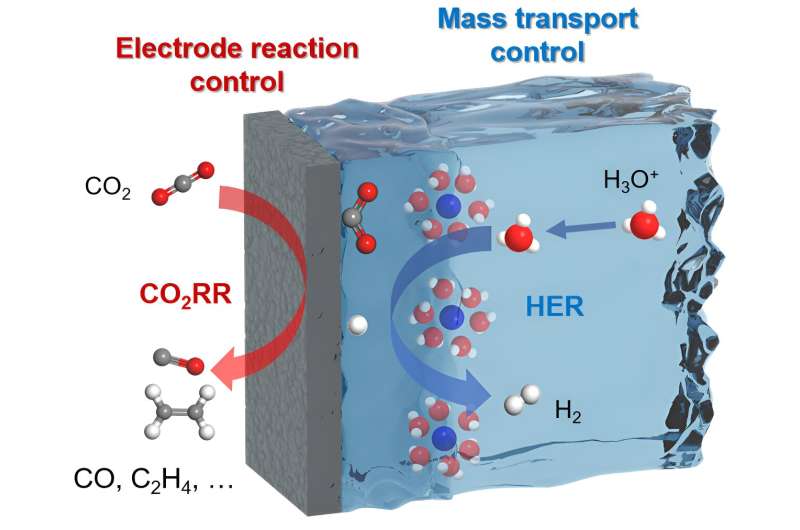This article has been reviewed according to Science X's editorial process and policies. Editors have highlighted the following attributes while ensuring the content's credibility:
fact-checked
trusted source
proofread
Review of carbon dioxide electroreduction in acid

CO2 electroreduction is a promising technique to convert renewable electricity and CO2 to high-value fuels and chemicals. Selectivity, energy efficiency, carbon efficiency, and sustainability are the criteria for CO2 electroreduction techniques suitable for industrial applications.
With alkaline and neutral electrolytes, carbonate formation from CO2 leads to low carbon efficiency. High energy consumption to regenerate alkaline electrolytes and high resistance of neutral electrolytes cause low energy efficiency.
Hence, CO2 reduction with acidic electrolytes becomes a hot topic due to its potential to increase carbon efficiency and energy efficiency. Improving the selectivity towards CO2 reduction is challenging in acidic conditions. Diverse approaches were proposed to suppress H+ reduction and promote CO2 reduction.
However, fundamental issues about the cation effect and local pH effect on CO2 reduction in acidic conditions are still under debate. Moreover, bicarbonate precipitation in gas diffusion electrodes limits the sustainability of acidic electrolytes.
Recently, a research team led by Prof. Jun Gu from the Southern University of Science and Technology, China, summarized the reported strategies to improve the selectivity towards CO2 reduction in acidic conditions from mass transport and electrode reactions.
Different approaches, including adding alkali cations, surface decoration, nanostructuring, and electronic structure modulation, are designed based on these two aspects. The methods for the simulation of CO2RR in acidic conditions are also summarized.
Finally, the opportunities to further improve the energy efficiency and sustainability of CO2RR techniques in acidic conditions are proposed. This review was published in the Chinese Journal of Catalysis.
More information: Xinyi Zou et al, Strategies for efficient CO2 electroreduction in acidic conditions, Chinese Journal of Catalysis (2023). DOI: 10.1016/S1872-2067(23)64511-5
Provided by Chinese Academy of Sciences





















